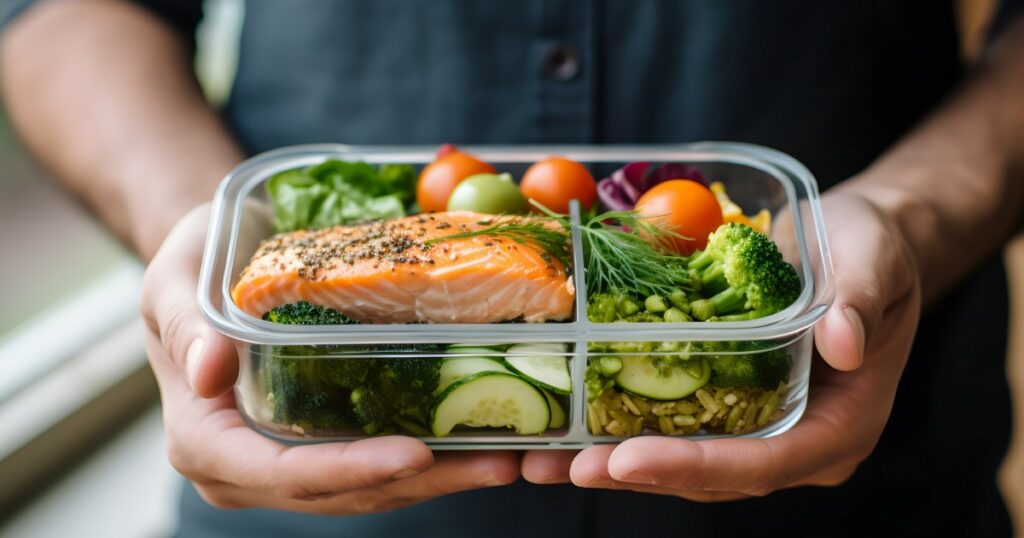A streamlined menu serves as a powerful tool in the ongoing battle against food wastage, and it achieves this by implementing several key mechanisms that harmoniously contribute to waste reduction.
Reduced Ingredient Variety
The limited selection of dishes inherently minimizes the ingredients and components required for daily operations. This concise ingredient list simplifies inventory management, maintaining tighter control over stock levels. With a more focused approach to ingredient procurement, the likelihood of over-purchasing or having ingredients go unused and wasted diminishes significantly.
Optimized Inventory Control
A limited menu presents a valuable opportunity to precisely forecast ingredient needs, leading to more efficient stock management and significantly reducing food wastage. This strategic approach involves carefully evaluating the ingredients required to craft the select dishes offered, ultimately streamlining inventory control and ensuring that resources are used to their fullest potential.
Accurate forecasting in the context of a streamlined menu begins with a comprehensive understanding of the culinary requirements of each dish. Owners and chefs can meticulously assess the ingredient quantities and variations needed to deliver these specific menu items to customers consistently. By doing so, they can calculate the precise amounts of each ingredient required regularly, considering customer demand, seasonal availability, and menu popularity.

Less Complex Preparation
A smaller menu brings with it a notable advantage in the form of simplified and streamlined preparation processes. This culinary focus allows for a more efficient and precise approach in the kitchen, ultimately reducing the likelihood of mistakes during cooking. This advantage extends well beyond efficiency; it plays a pivotal role in minimizing food wastage by ensuring that each dish is prepared correctly the first time.
Portion Control
Including well-defined portion sizes within a streamlined menu is a strategic move that contributes significantly to efficient portion control, customer satisfaction, and reducing food wastage. This meticulous attention to portion sizes is a hallmark of streamlined menus and represents a commitment to delivering a dining experience that is not only delicious but also perfectly balanced.
One of the foremost advantages of clearly defined portion sizes is the prevention of over-serving. With a limited menu, chefs and kitchen staff can diligently measure and plate each dish to precise specifications. This ensures that customers receive an amount of satisfying food without being excessive. Over-serving leads to potential wastage as uneaten food is sent back to the kitchen and can result in customer dissatisfaction due to feeling overwhelmed by large portions.

Standardized Recipes
A focused and streamlined menu establishes and upholds standardized recipes for each of their signature dishes, thereby promoting unparalleled culinary consistency and efficiency. This commitment to precise and replicable recipes is a fundamental pillar in minimizing ingredient deviations and reducing food wastage.
One of the primary benefits of standardized recipes lies in their ability to optimize ingredient usage. With these recipes in place, foodservice operators can accurately calculate the exact ingredients required for each dish. This precision minimizes the risk of over-purchasing or underutilizing ingredients, as the quantities needed are based on historical data and expected customer demand. Consequently, this meticulous approach to ingredient management mitigates waste associated with surplus stock or unused items.
Real-Time Inventory Tracking
Implementing real-time inventory tracking systems with a streamlined menu marks a transformative shift in resource management and waste reduction. A focused menu inherently entails a reduced variety of ingredients, making it an ideal environment for the seamless integration of technology to monitor and manage inventory efficiently.
Real-time inventory tracking systems provide unparalleled visibility and control over ingredient levels. With fewer ingredients to monitor, these systems can be fine-tuned to meticulously track the quantities, shelf life, and usage patterns of each item in stock. This granular data empowers staff and management to maintain optimal stock levels with high accuracy.

Menu Flexibility
The flexibility of a streamlined menu is a hidden gem that allows foodservice operators to respond swiftly and creatively to ingredients that are approaching their expiration date. While the core focus of a limited menu remains unchanged, the ability to adapt and introduce specials or limited-time offerings when ingredients are nearing their shelf life is a strategic approach that minimizes food wastage and showcases the culinary team’s resourcefulness.
Reduced Prepped Items
The impact of a smaller menu on food preparation extends beyond just the variety of dishes offered; it significantly transforms the entire workflow in the kitchen, resulting in a reduction of prepped items and a notable decrease in food wastage associated with the preparation process. This streamlined approach to kitchen operations embraces efficiency and precision, contributing to a more sustainable culinary environment.
Prepped items are considerably fewer with a limited menu. Most of the ingredients on the menu are exclusive to each dish. It reduces the need for extensive chopping, slicing, and preparing of ingredients. In a larger, more diverse menu, ingredient wastage can arise from unused or excess prepped items.
Conclusion
A streamlined menu represents a culinary approach that champions efficiency, precision, and sustainability. By simplifying ingredient management, optimizing inventory control, reducing preparation complexity, and promoting efficient portion control, it is a powerful tool for minimizing food wastage in the industry. This holistic strategy reduces costs, enhances the dining experience, and aligns with broader sustainability goals. In a world where responsible resource management and environmental stewardship are paramount, a streamlined menu emerges as a beacon of responsible dining, offering a pathway to minimize waste while delivering exceptional culinary experiences.
